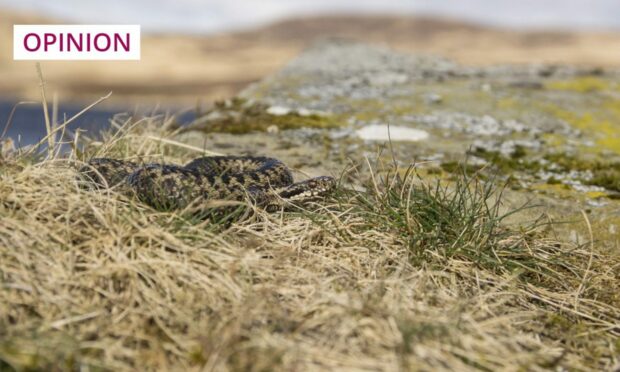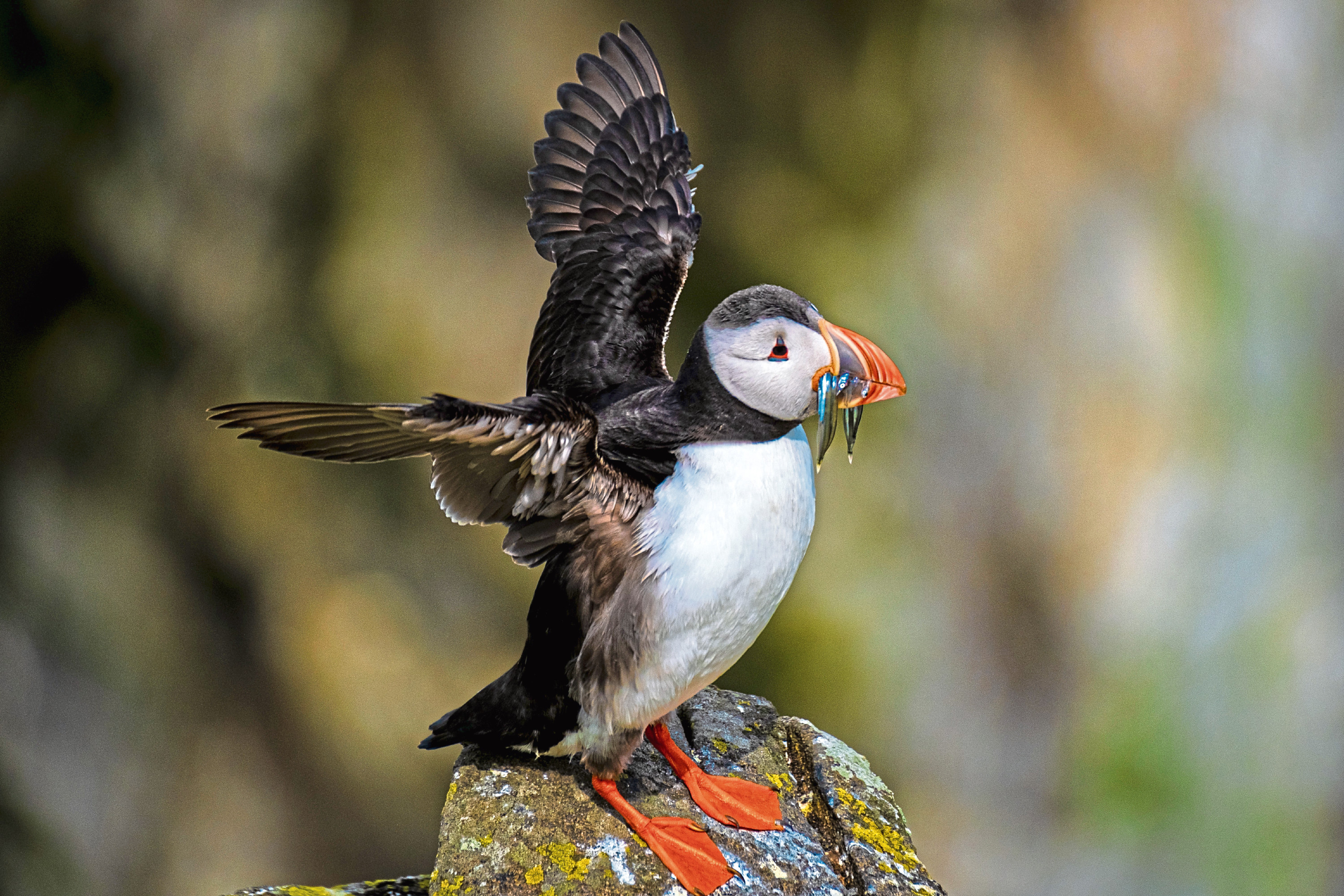When it comes to wildlife watching, I’m generally content to stroll about and take delight in whichever creatures cross my path.
There are, however, a select few I actively seek out – otters, green hairstreak butterflies, oil beetles. But the undisputed top drawer is the adder.
It holds a special fascination. Something to do with it being our only venomous snake, and the fact that where I grew up, in the West Midlands, there wasn’t much in the way of exciting wildlife.
Adders were confined to rare, heathy places, like Cannock Chase, and their presence in those islands of wildness gave them an exoticism that was otherwise lacking in the red-brick sprawl of Birmingham.
But adders are also one of our most beautiful creatures and, prone as they are to statuesque stillness, it means that when you do see one, you REALLY see it.
It was years before I spotted one, of course, because the distinctive markings that give the snake its special beauty also render it invisible. A black-brown zigzag pattern – all the way down its back, from head to tail – can easily be mistaken for the shadow of a leaf, or a dark recess between two bracken fronds.

I didn’t see my first adder until 2003, just after I moved to Scotland. It was quite the moment, but it would be 12 long years ’til I had another like it.
Though that felt like a massive gap, speaking to visitors to Mar Lodge Estate taught me that two adders in one lifetime is more than most folk see. It’s amazing how many lifelong walkers in Scotland are still awaiting their first adder encounter.
Chances are, they’ve had adder encounters over the years – they’ve just not realised it. The vibrations of approaching boots or wheels will likely have sent at least one snake slithering for cover during their walking lives, mere feet away from them.
Happily, my own sightings skyrocketed when I moved to the Cairngorms. This is prime adder habitat and, given how much time I spend working outdoors, it’s unusual not to see at least one of them each year.
Even so, the buzz hasn’t diminished. For, while adders are widespread enough to give you a good chance in the right weather, they’re camouflaged enough to make it challenging, and elusive enough to make it feel like a rare privilege.
Exaggerated news stories don’t help
I saw my first adder of 2023 only last week. I was tree-planting with some volunteers and, when returning to our site after lunch, someone casually remarked: “Oh, there’s an adder.”
Sure enough, there it was, just a foot away from our bag of trees.
Probably a male, given its creamy-grey colour, although colour alone isn’t always a reliable indicator of sex. Adders can be brown, black and shades in between.
But, male or female, whenever I encounter an adder, I’m always taken aback at how small they are. Yep, they’re the reptile equivalent of puffins.
However, if you’ve never seen one and you’re routinely exposed to alarmist tabloid headlines, you could be forgiven for expecting a monster. There was a baffling headline last year in all the red tops about a North Yorkshire dog “bitten in face by 15ft adder”!
Fifteen feet? Even king cobras and anacondas struggle to reach that length. That’s longer than the diving area of a swimming pool is deep.
It’s dire, frankly, that news stories like those get published without an ounce of fact-checking. The biggest female adders struggle to reach three feet, whereas most males aren’t even two feet long. That’s why they’re so hard to find, and difficult to see. The one I saw was barely even 15 inches.
Don’t judge a snake by its red eyes
To be fair, the adder doesn’t do itself any favours in the public relations department. I mean, red eyes and elliptical pupils, for goodness’ sake. That’s straight out of the horror textbook.
Not that an encounter with an adder can’t be a serious business. It absolutely can. Because, as with bee and wasp stings, until a bite happens, none of us knows how our bodies will react.
But these shy creatures aren’t monsters. They’re not out to get us.
As someone who is outdoors all the time in the places adders like to hang out, I certainly don’t lose sleep over the risk
Most bites are minor and happen to people who inadvertently threaten an adder by unwittingly stepping on or near it. The rest happen to people who, for some unfathomable reason, pick the adder up. Please, don’t ever do that.
Caution is arguably more warranted if you have a dog prone to rooting around in heather and grass. But, as someone who is outdoors all the time in the places adders like to hang out, I certainly don’t lose sleep over the risk.
If anything, I wish I could see more of them. But, then, as with any jewel, I suspect if they were ten-a-penny easy to find, then a bit of their mystique would surely fade.
Ben Dolphin is an outdoors enthusiast, countryside ranger and former president of Ramblers Scotland












Conversation